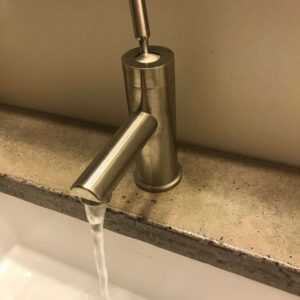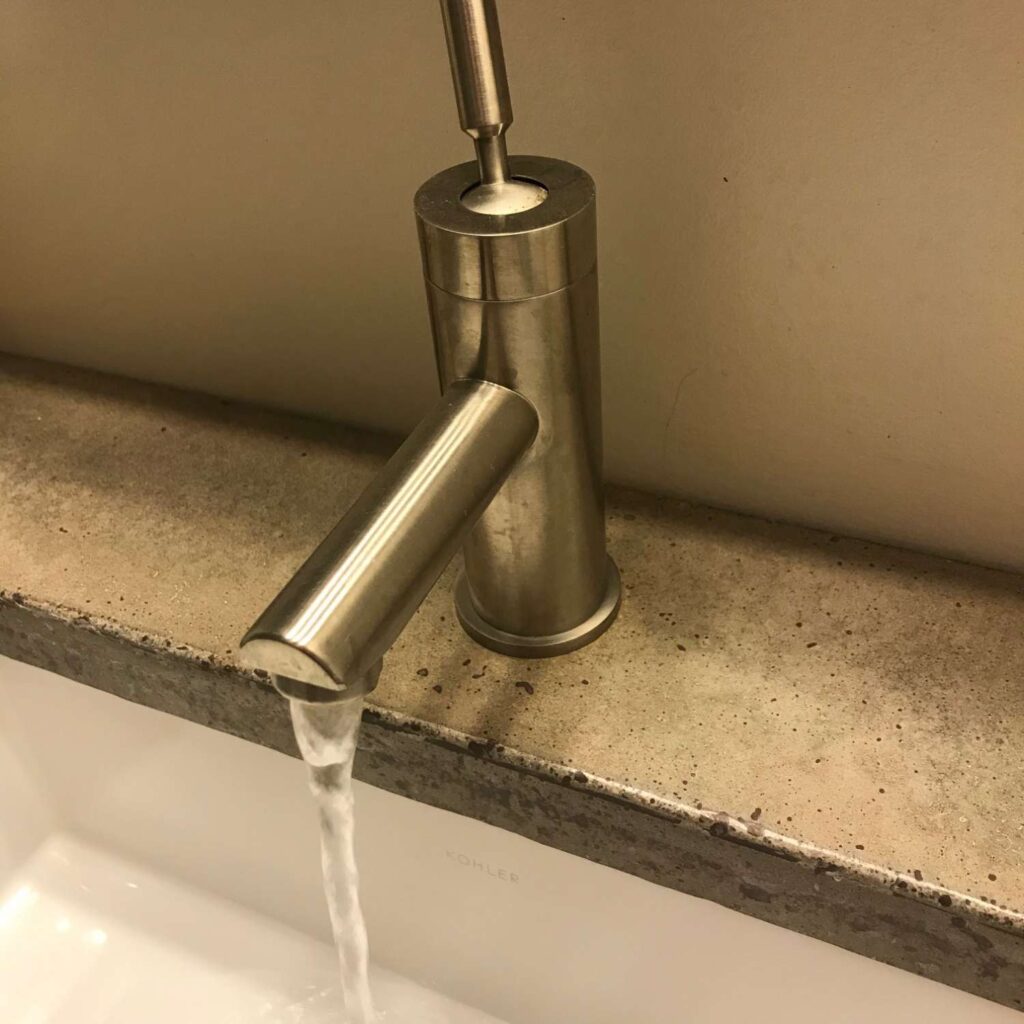
Hot water recirculating loops are having a moment. They’re popular with plumbers because they reduce callbacks homeowners who don’t want to run their taps and wait for hot water. They’re also quite inexpensive to install – if you install them in a way that will work really inefficiently. Recirculating loops ARE a water-saving feature. But if you’re not careful, they can waste a LOT of energy. And homeowners will be paying for these loops every month on their utility bills as long as they own the home.
If someone is selling you on the water-saving benefits of a recirculation system, and they’re NOT also talking to you about low-flow showerheads and toilets, it’s worth questioning whether they’re really motivated by water conservation. The energy penalty isn’t just speculation on my part. Before the HERS rating system started penalizing homes for poorly done recirculation systems, we did several audits a year from people who had really high bills because of these systems.
What’s a hot water recirculating loop and how is it different from a standard system? A typical hot water system has piping that comes from the water heater in a “tree” configuration, with a main trunk and smaller branches that go to each fixture. When you turn on the hot water tap, you have to wait for the cool water to flush out of the piping before you get hot water. A recirculating system is piped differently using a loop that travels throughout the house and gets close to all of the fixtures that use hot water. There are very short branch pipes that connect this loop to each fixture. A pump is used to circulate hot water through the loop, so that hot water arrives at the fixture very quickly.
When you understand how recirculating systems work, it’s pretty obvious what can go wrong from an energy standpoint. First, the pump can use a lot of energy if it’s inefficient and it runs all the time. Second, all this pipe filled with hot water can transfer a lot of heat to the house, especially if it’s not insulated. In the winter, you’re heating your house with your hot water – which usually isn’t the most efficient way to heat your house. In the summer, you’re still heating your house and your air conditioning has to work harder to remove this heat. Insulating the pipes helps, but pipe insulation isn’t very thick, so you still get this effect.
So, recirculating loops come with a potentially big energy penalty. The first question you should ask is, “do I really need one”? If the house is smaller and the water heater can be centrally located, you don’t. Sometimes in a bigger house, you can have two water heaters, both of which are relatively close to their fixtures. You can get hot water to fixtures more quickly using a “manifold” plumbing system. Manifold systems have a “home run” of pipe to each hot water fixture. These home runs can be smaller and more direct, so it doesn’t take as long to flush the cool water out of the pipe. I also encourage clients to think about whether they need fast hot water at *every* fixture. You may be happy with a water heater that’s located close to your master bathroom, but be willing to wait at an infrequently used guest bathroom or a laundry room.
The decision to do recirculation is very individual. This will be surprising to some of my clients, but I do sometimes recommend recirculating systems. If I look at all of above strategies and feel that the plumbing fixtures in a home are just too far apart and can’t reasonably be served by any of these strategies, it’s worth considering recirculation. But you have to commit to doing it right, which isn’t going to be free.
So what are the major steps to designing a recirculation loop that wastes less energy?
- Insulate the loop piping: This is actually code in North Carolina and most places. Unfortunately a lot of plumbers aren’t aware of it because it’s in the energy code, not the plumbing code. And it’s missed a lot by building inspectors because it’s not always obvious at rough-in that there will be a loop – unless they trace out the pipe loop. It’s especially important to insulate the last few feet of pipe right at the water heater, which are often installed later and missed. Making sure to fully insulate bends and tees matters. Insulating the branches also helps.
- Don’t install a crazy amount of loop piping: The loop is always going to heat your house, no matter how much you insulate it. So if you can do less loop, you get less heating that you don’t want. Lay out your loop to get close to those important rooms (master bath, kitchen, etc.) and maybe you don’t need to get so close to infrequently used rooms. I’ve seen homes that added 60 feet to a loop to get to a laundry room that didn’t even have a sink. Is anyone going to notice if it takes a minute to get hot water there? I’ve seen loops that actually travel down into walls to get within 2 feet of the fixtures. Keeping it in the floor or ceiling really should be fine.
- Use a control so that the pump doesn’t have to run all the time: This saves energy from the pump itself and also lets the loop cool down some to reduce the house heating effect. The best controls are either occupancy sensors or buttons that the homeowner can press when they walk into a bathroom to activate the pump only when someone is likely to use hot water. Systems that use these controls are required in more progressive states and will give you instant hot water with very little energy penalty. I have had clients install them successfully, but unfortunately some have trouble getting it done. A less efficient but acceptable option is to use temperature-based control. These controllers activate the pump only when the loop cools down.
- Don’t only rely on timers: Timers seem like a good idea, but they’re not a stand-alone solution and you get no credit in the HERS rating system for a timer. I think timers can be helpful when installed with temperature-based control. They can be used, for instance to turn the system off entirely overnight when hot water is unlikely to be needed. However, they’re not very effective during the day. People use hot water at fairly random times, and they tend to turn timers off when they aren’t getting hot water. If you have a loop that’s not on it will take much LONGER to get hot water at the fixture than it would with a non-loop system, so occupants likely won’t be satisfied with a timer that they notice isn’t on.
Another area of confusion out there locally is the “future loop”. Don’t allow your plumber to install a “future loop” – there’s no such thing. Either your plumbing is installed in a loop and you should take the above steps to do it right, or it isn’t. The idea behind the “future loop” is that they’re going to install the piping in a loop and only add a pump if you complain about how long it takes to get hot water. There are several problems with this:
- You’re going to complain. It takes longer to get hot water if the plumbing is installed in a loop.
- It’s almost always impossible to get access to insulate all the loop piping later. We don’t install anything else in homes “for the future” that we know wouldn’t meet today’s building code. If you have a loop, it needs to be insulated.
- If you don’t connect the return portion of the loop, you’ve created a dead leg in your hot water piping system. A dead leg is a length of piping that is connected to your active hot water piping but doesn’t go anywhere. Water just hangs out in there at room temperature or slightly above. Unfortunately bacteria, including the kind that causes Legionnaire’s disease, loves this range of temperatures. This is a risky thing that I certainly wouldn’t want in my house and that would probably not be easy to trace as the cause of someone getting sick.
I understand that it’s a pretty compelling argument when you hear that you might hate your system later, so you’d better install a loop just in case. However, that’s not entirely true. There ARE systems that will function much like a recirculating loop that can be installed later in an existing home (I’ve written about them here). So if you’ve looked at the distance to your fixtures and think you’ll likely be OK with the wait, you won’t be out of options if you change your mind.
So absolutely, I want you to practice water conservation. I’m also totally cool with the idea that you might also get fast hot water. Just don’t do it at the expense of energy conservation. You can have both.
Copyright 2020 Amy Musser.


